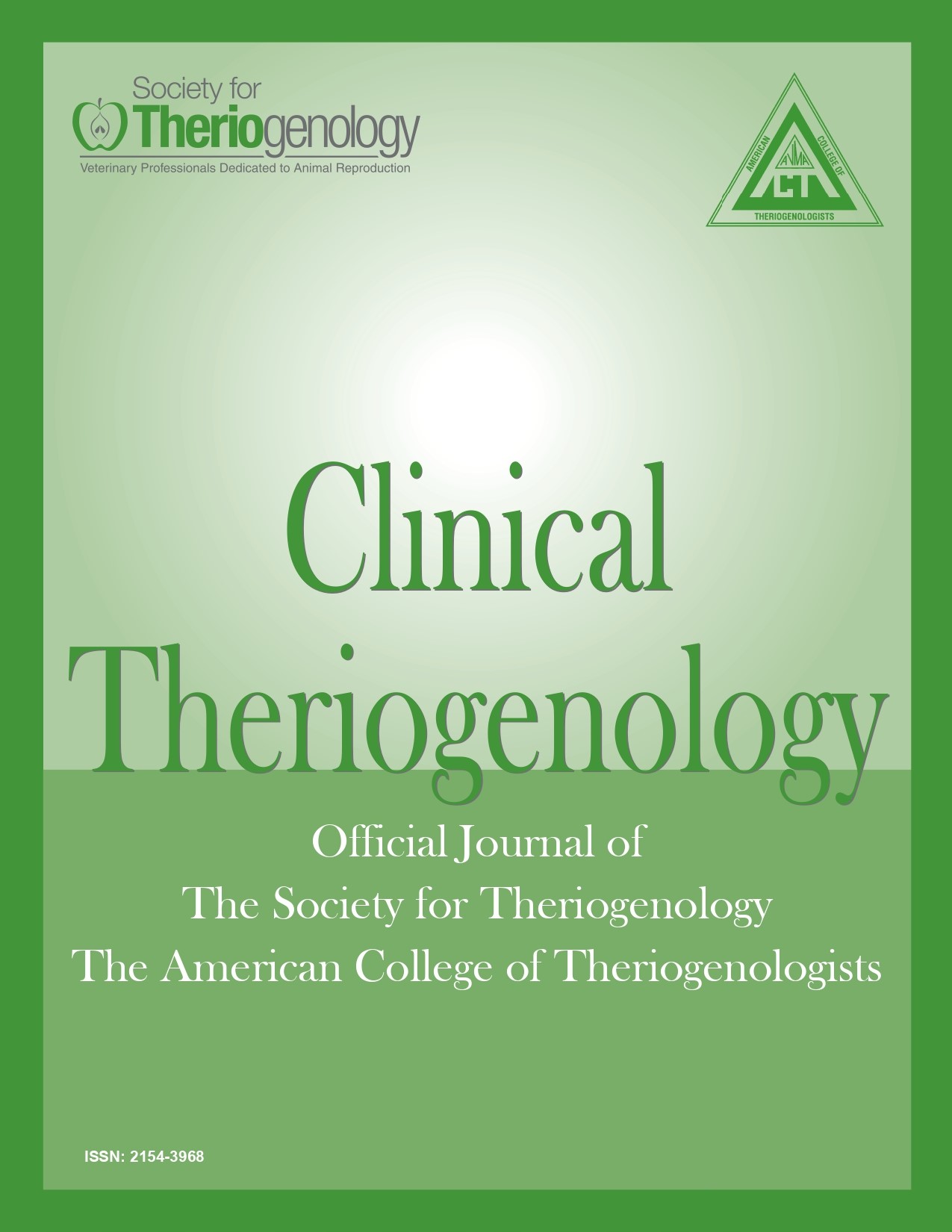Effect of feeding glucosinolates to mares on triiodothyronine levels
Abstract
Brassicaceae family plants contain glucosinolates (GSL), which when ingested form metabolites that suppress thyroid function by inhibiting iodide uptake and organification. Experimental data on the tolerance of horses to GSL are lacking, however consumption of GSL during pregnancy has been linked to hypothyroidism in dams and their foals. Our null hypothesis was that chronic feeding of GSL would result in normal thyroid function in non-pregnant mares. A 3-month feeding trial was performed using isonitrogenous and isocaloric diets, with oriental mustard powder included as a source of GSL. The effect of GSL on triiodothyronine (T3), the biologically active form of thyroid hormone, was studied. Mares were assigned to four diet groups: control (n = 6), propylthiouracil (PTU; n = 6; 4 mg/kg PO SID), low GSL (n = 7; 20 mmol GSL / day), and high GSL (n = 6; 35 mmol GSL / day). Thyroid releasing hormone (TRH) stimulation tests (1 mg IV, Sigma Chemical Company) were performed at 0, 6 and 12 weeks with blood obtained at 0 and 2 hours after TRH administration. Serum T3 and thyroxine (T4) levels were measured using Siemen’s Immunlite method (Prairie Diagnostic Services, Saskatoon, SK). Triiodothyronine parameters measured were: basal (pre-), post-TRH (2 hr), fold change, post-pre TRH, and T3/T4 ratio. Data were analyzed at (p<0.05; SPSS version 24) by Shapiro-Wilk, and median tests with pairwise Bonferroni corrected post-hoc comparisons. There was a significant effect of week among groups on median T3: fold change (p=0.008), where week 0 was greater than week 12 (p=0.003) and week 6 was greater than week 12 (p=0.003); Post-pre data (p=0.039) with week 6 values greater than week 12 (p=0.020); T3/T4 ratio (p<0.001) with week 0 greater than week 6 and 12. There was a significant effect of group on T3 median: pre values (p<0.001), with PTU group less than control (p<0.001), low GSL (p<0.001) and high GSL (p=0.002); post values (p=0.002), with PTU group less than control (p=0.002), low GSL (p=0.02) and high GSL (p=0.024), and control values were greater than (p=0.046) the high GSL group; post-pre median values (p=0.001), with control greater than PTU (p=0.002), low GSL (p=0.039) and high GSL groups (p=0.046); and T3/T4 ratio (p<0.001) with control greater than the PTU (p=0.031) group. In conclusion, PTU and GSL groups resulted in lower T3 values over time, with the PTU group more dramatically affected compared to the GSL group, with control group having greater median T3 post values than High GSL mares, as well as greater T3 post-pre levels than high and low GSL mares. In addition, dietary tolerance of mares to GSL is less than 20 to 35 mmol per day, as there is evidence of thyroid suppression at this level, and should be avoided.
Downloads

This work is licensed under a Creative Commons Attribution-NonCommercial 4.0 International License.
Authors retain copyright of their work, with first publication rights granted to Clinical Theriogenology. Read more about copyright and licensing here.





